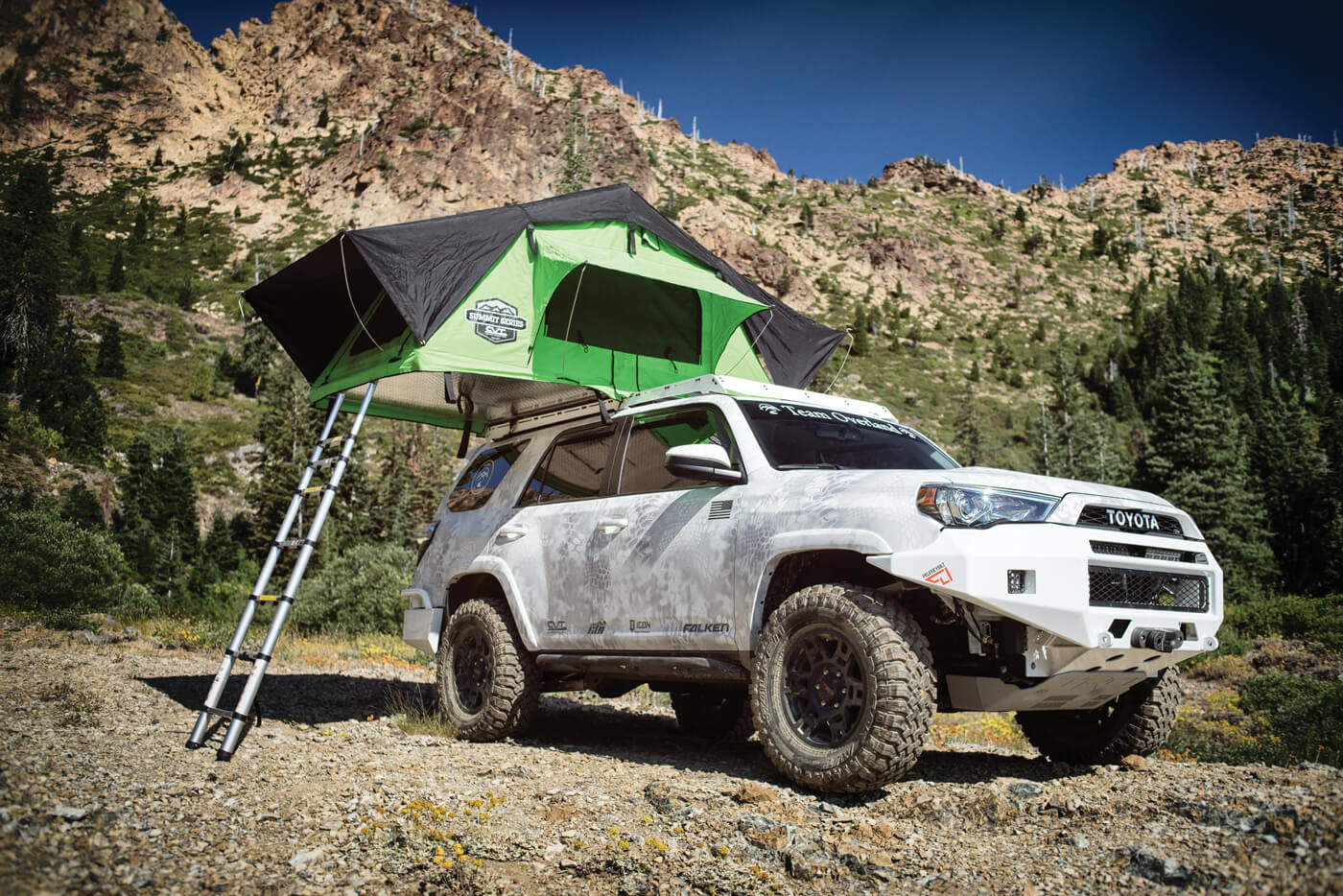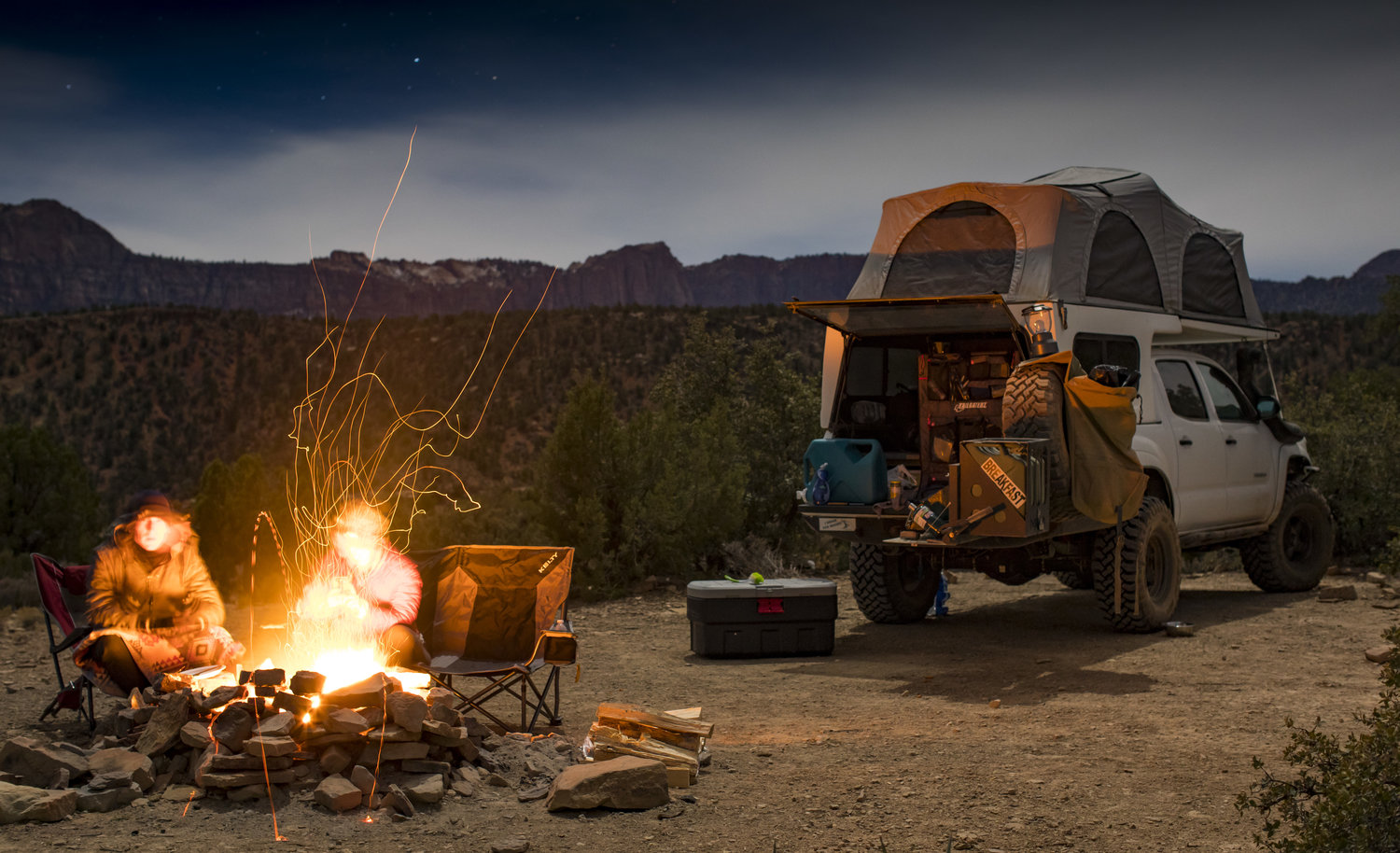An Adventure Over Vietnam’s Hai Vân Pass
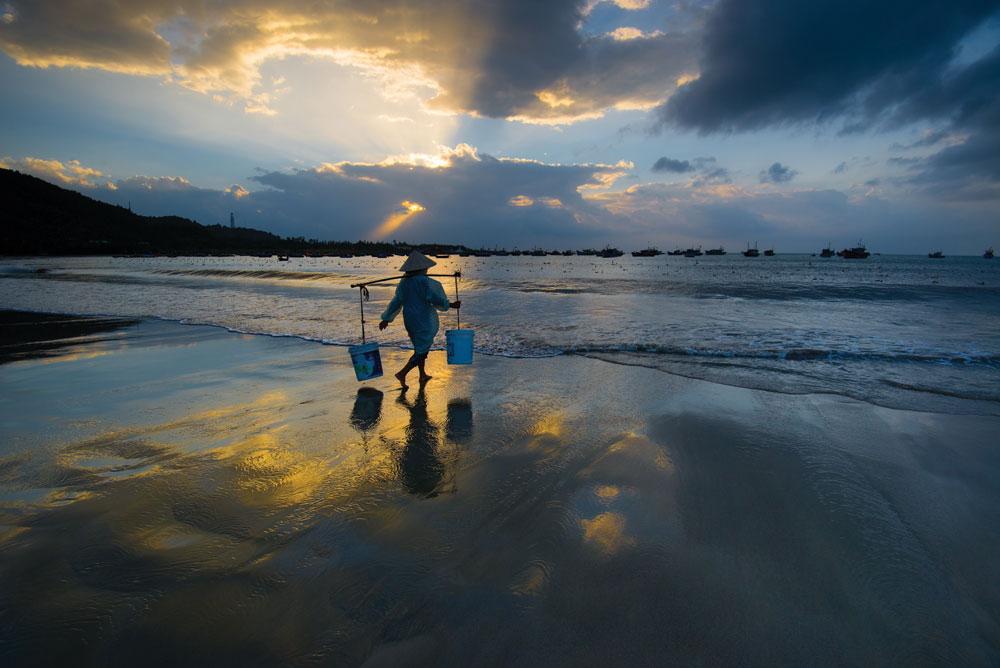
Hue To Hoi An: Seeking The Best Sandwich In The World
No, I said firmly, explaining that the scooter lady down the street had offered a better deal. A one-way rental from Hue to Hoi An for $30 per person, and they’d even deliver our heavy luggage. I walked away—and he chased after us as expected.
“Tirty U.S. dollhars per pershon,” he said in broken English—which was much better than my Vietnamese mind you. Now my interest was peaked, and I turned around to negotiate further. I didn’t care about the price, but there was no way in hell I was giving up our presumably valuable American passports as the deposit for a one-way rental on a 15-year-old scooter that had been around the sun a dozen times. I offered twenty bucks, and did the usual walk-away to show that I was done. “Twenty-faive dollhars per pershon, we keep luggage as depoosit, no passport” Haggling in Vietnam as a tourist can be a pain, but at least there’s a common formula, if not a ritual to it all. Twenty-five bucks for one-way scooter rental seemed fair enough. I agreed, and before I knew it, a scooter was thrown in front of me, and a dingy helmet of questionable sanitation was plopped on my head.
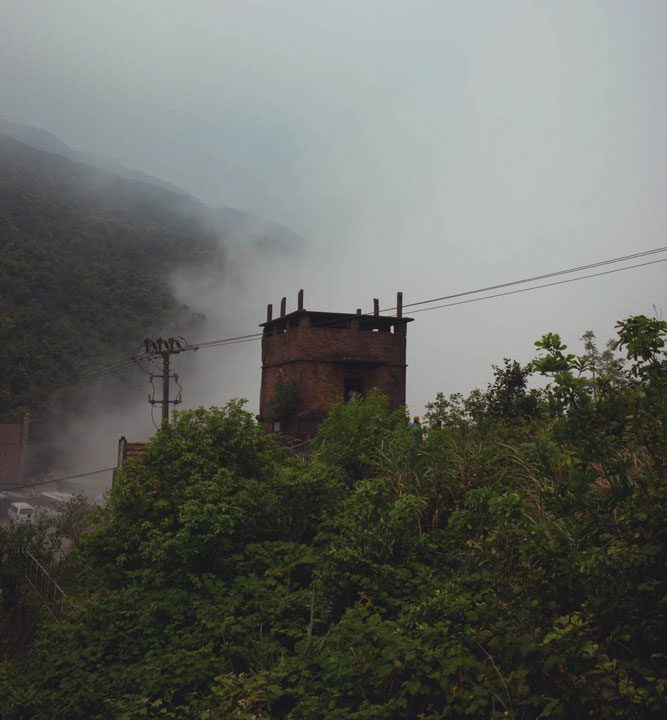
To put it politely, this scooter was a massive pile. It was a Yamaha, with 125cc’s of worn-out fury, rattling the bodywork which had been hastily repaired at outrageous prices at least a dozen times; paid for by the bandage-wrapped backpackers drinking only a stone’s throw away on Hue’s Pham Ngu Lão street, popular for its tourist bars, presumably milking their crash story for every ounce it was worth.
All-in-all, it took us about twenty minutes to acquire the valiant, yet underpowered steeds that would be ours for the next couple of days. They might have been rundown, but focusing on the adventure—and not the machine—is refreshing.
The Citadel to the Coast
Just south of the war-era demilitarized zone between North and South of Vietnam, Hue is dissected by the Perfume River, with the north of the city dominated by the massive, ancient Imperial City; built in the 1300s and later home to Nguyen dynasty, the last ruling family of Vietnam. Americans may better know it as the Citadel, home to some of the fiercest fighting of the Vietnam War, and the center of the Tet Offensive.
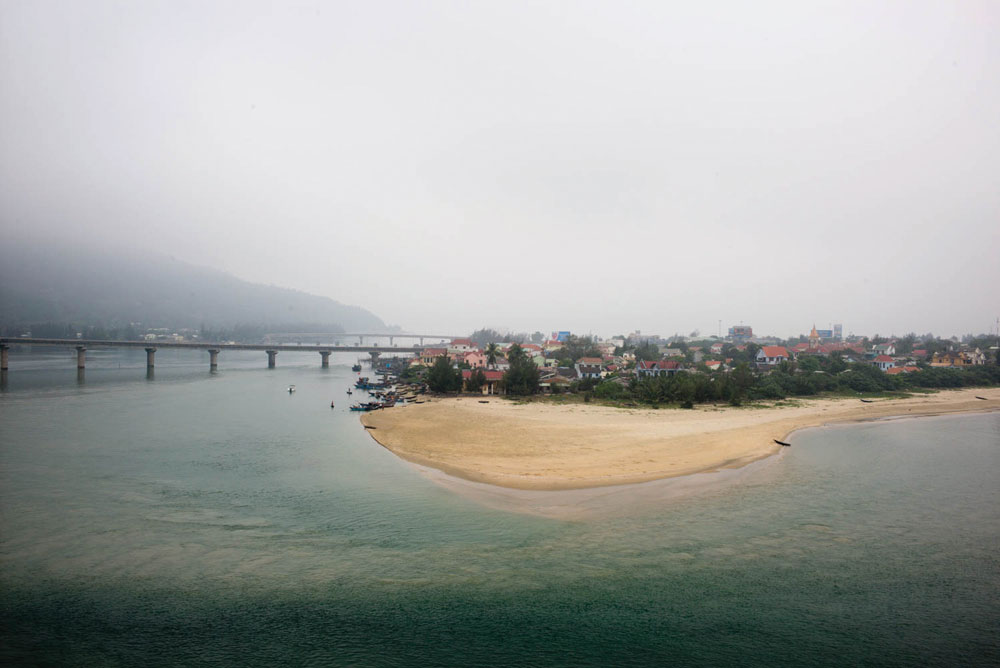
The lookout over Lang Co Beach marks the official start of Hai Van Pass.
Absorbed into the flowing sea of scooters, often carrying entire families—we jumped into the deep end and crossed the rickety bridge over the Perfume River on our way to the historic city. Fifty years prior, U.S. Marines fought tooth-and-nail for days to cross this bridge, part of a month-long battle to fight the North who had taken refuge in the historic Citadel—despite earlier agreements to spare its destruction.
“I didn’t care about the price, but there was no way in hell I was giving up our presumably valuable American passports as the deposit for a one-way rental 15-year old scooter that had been around the sun a dozen times.”
Because of this, nearly 80% of Hue was destroyed by both sides before we declared victory, but the costly drawn out battle was widely considered to be the turning point of American support for the war, those at home were starting to not see the point.
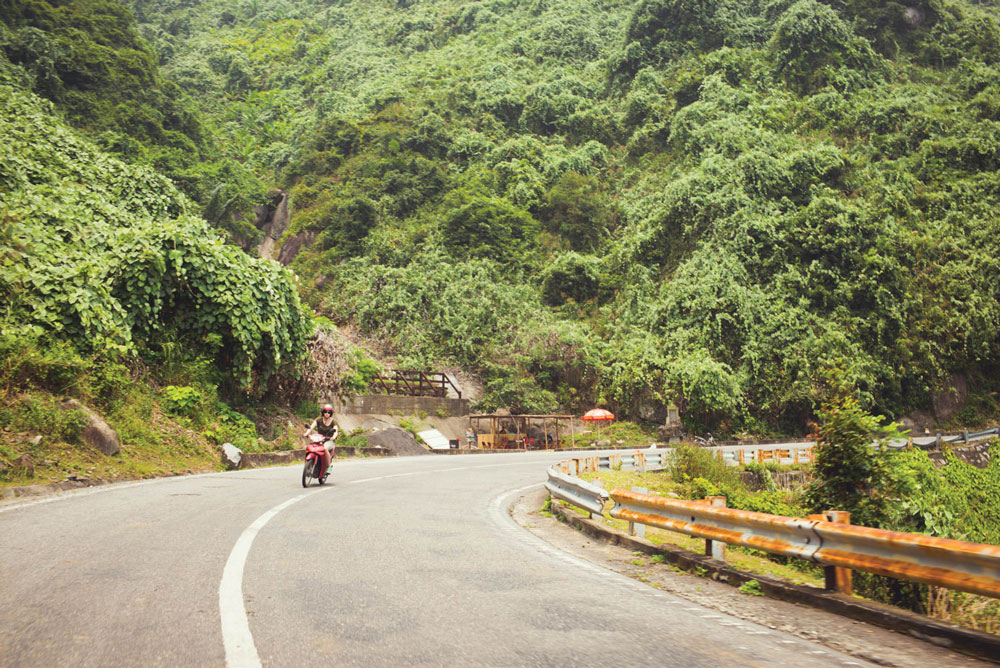
At times Hai Van Pass makes you feel like you’re the only person in the world, but it doesn’t take long to get a reminder that you aren’t.
The Citadel itself is imposing, historic, and sobering. As tourism increases (over half a million Americans visited Vietnam in 2016), the living war memorial is slowly being restored, piece-by-piece, building-by-building. Progress is slow, but ensuring the survival of this UNESCO World Heritage site is important to the culture and identity of Vietnam.
“Just a few miles outside of the city and you’re riding along a seldom-visited stretch of coastline dotted with fishing villages famous the production of one of Vietnam’s most distinctive flavors—fish sauce.”
The captured American tanks, Huey helicopters and abandoned jets, proudly displayed outside as a sign that they eventually won the war—are a stark reminder that you are in Communist Vietnam. I’d give a lot to see this place in its full glory before the war, because even as a ruin, it’s one of the most impressive things I’ve ever seen.
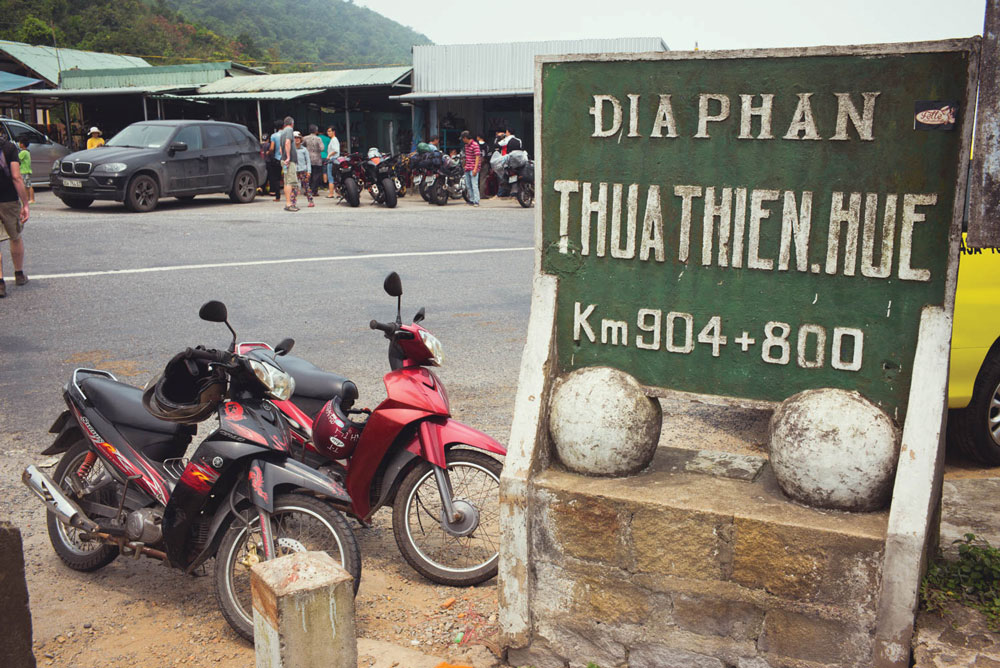
Wet, steep, rutted, and filled with oil, the sharp hairpins are nothing to mess around with when you’re on two wheels.
It doesn’t take much to get out of the hustle-and-bustle of Hue. Just a few miles outside of the city and you’re riding along a seldom-visited stretch of coastline dotted with fishing villages famous for the production of one of Vietnam’s most distinctive flavors—fish sauce. An acquired taste that I’ve come to enjoy in Phô (pronounced as “fuh”), a broth soup with noodles, I wouldn’t exactly say the fermented sauce is the most pleasant thing to smell. The coastline is peppered with clay pots filled with rotting fish, which smell only slightly worse than the sauce itself. The omnipresent stench makes it easy to get distracted—and lost.
Ride Past The Bunker, Around The Goat, and Watch Out For The Truck
“You’re going to ride over Hai Vân Pass? Please don’t get killed. It is very dangerous.”
I appreciated the concern of the hotel’s concierge at check-in, but I assured him we’d be fine. Vietnam is a land of stark opposites—a few hours earlier we were riding through primitive fishing villages, now we were staying at one of those over water villas famous in the South Pacific, only here they were $120 a night, not $2000.
“Watch out for the goats,” was his parting advice as we rode off towards Vietnam’s most rugged mountain pass, “Only the animal and gasoline trucks take that road, and the goats, and none of them like tourists clogging it up.”
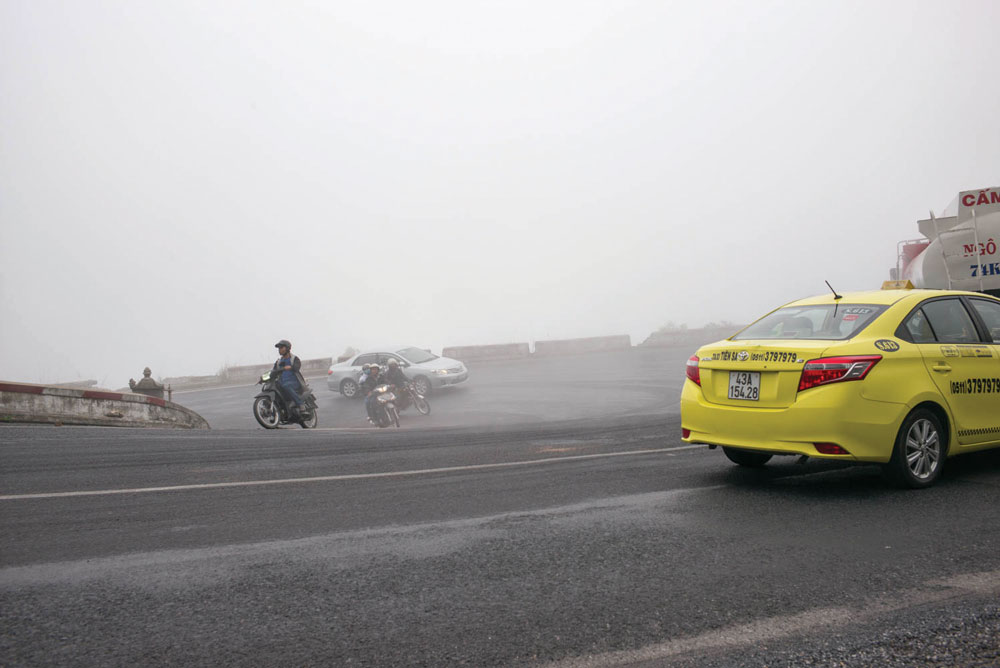
Getting to the pass put us on Vietnam’s Highway One for the first time, the main road that links the north to the south, and also its busiest. Imagine your local interstate, with no effective traffic lights, scooters weaving across all lanes, and truckers of questionable skill also weaving about. Then throw your local farmer’s market on both sides and add a scooter capable of doing a max of 30 mph into the mix.
Half-mile into the pass, a large pack of goats swarmed at Laura from the left, a few unhappy cows appeared out of nowhere from the other side, and in the midst of it all were a large quantity of chickens, pecking ferociously at anything that moved. Without hesitation, she swerved around the goats, slammed on the brakes to avoid the cows, and (pun intended) played chicken with the chickens until they moved.

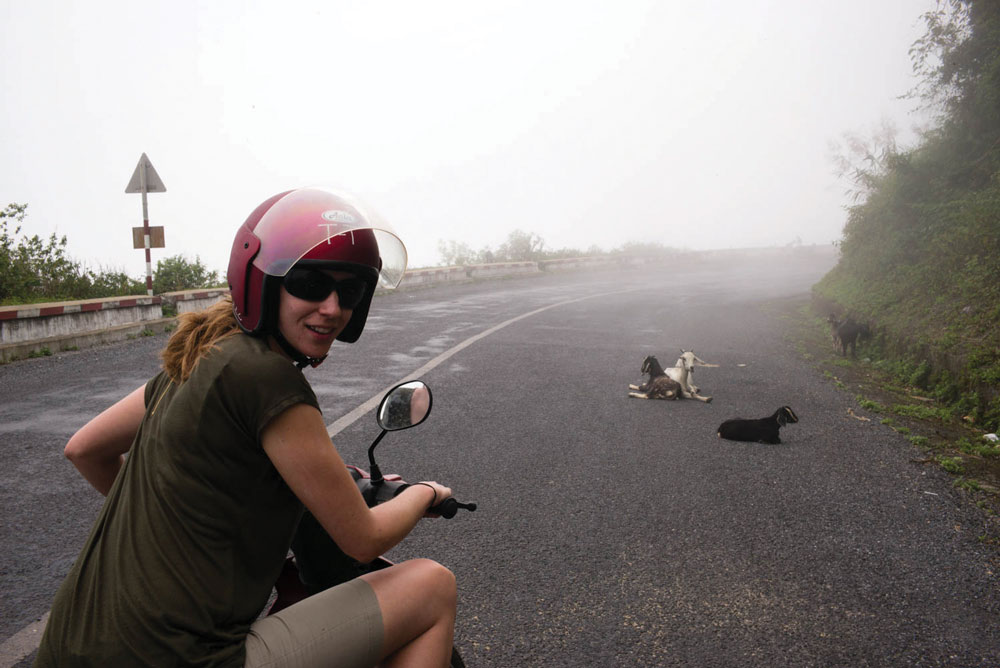
The fog can be so thick at times that you’re lucky to see the person behind you.
But then Vietnam happened, and in the middle of the chaos, a tour bus flew around the blind turn in the wrong lane, missing her by feet and slamming on the brakes to let its passengers out to take more selfies with the rogue animals. This is the moment when I became squeamish at what I positively thought was going to be the gruesome death of my loving girlfriend. Repeat this ad nauseam, and you’ll have a pretty good idea of the next few hours.
But Hai Vân Pass isn’t as busy as it historically has been. Once the only supply route between Hue and the DMZ and the port city and American encampment in Da Nang, Hai Vân Pass was essential to the war effort. The recently constructed Hai Vân Tunnel, Southeast Asia’s longest at just shy of four miles, reduces the journey by 12 miles—provided you can pay the fee, and that you’re not carrying livestock (as they have a reputation of escaping the home-built transporters), riding a scooter, or transporting hazardous or explosive materials.
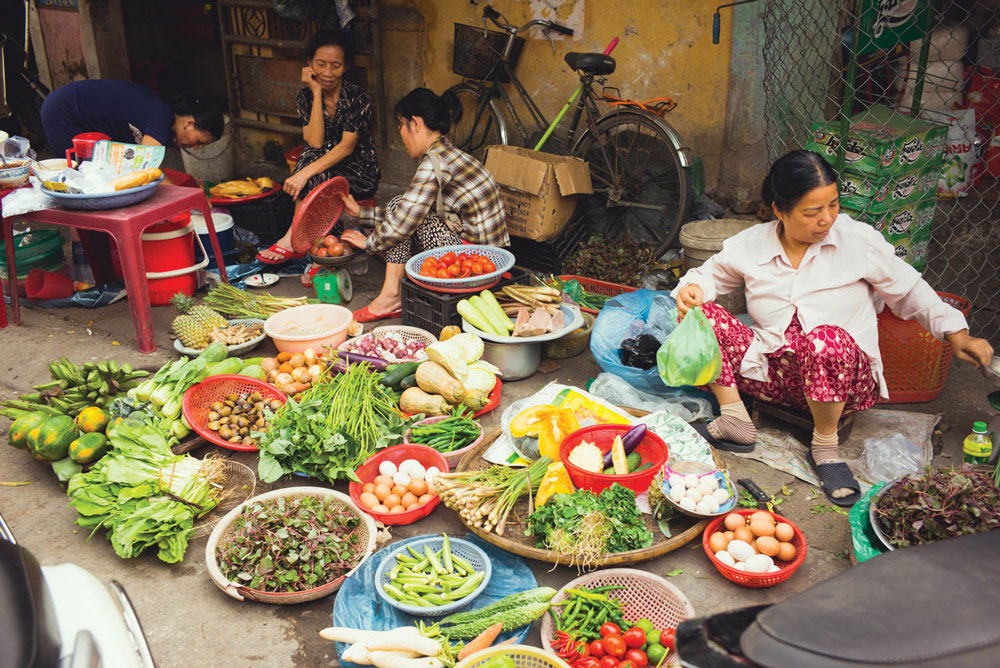
Locals still buy their produce, meats, and other goods at the market in Hoi An..
That leaves the dangerous trucks for the pass, which are intermixed with tour buses and tourists on scooters, both trying to get a glimpse of the views made famous by Top Gear’s Vietnam Special—Clarkson once called it “a deserted ribbon of perfection—one of the best coast roads in the world,” but I’d hardly call it deserted anymore.
“The road to the summit continues chaotically. Hairpin turn after hairpin turn, pissed off goat after pissed off goat.”
The road to the summit continues chaotically—hairpin turn after hairpin turn, pissed off goat after pissed off goat. With chickens continually peppered in for flavor, but you quickly learned to ignore them on this mountain pass turned livestock farm. With the mountains jutting out straight to the sea, the clouds—or potentially smog—enjoys hanging out here, often reducing visibility at times to a matter of feet, and leaving the road slick as an ice rink.
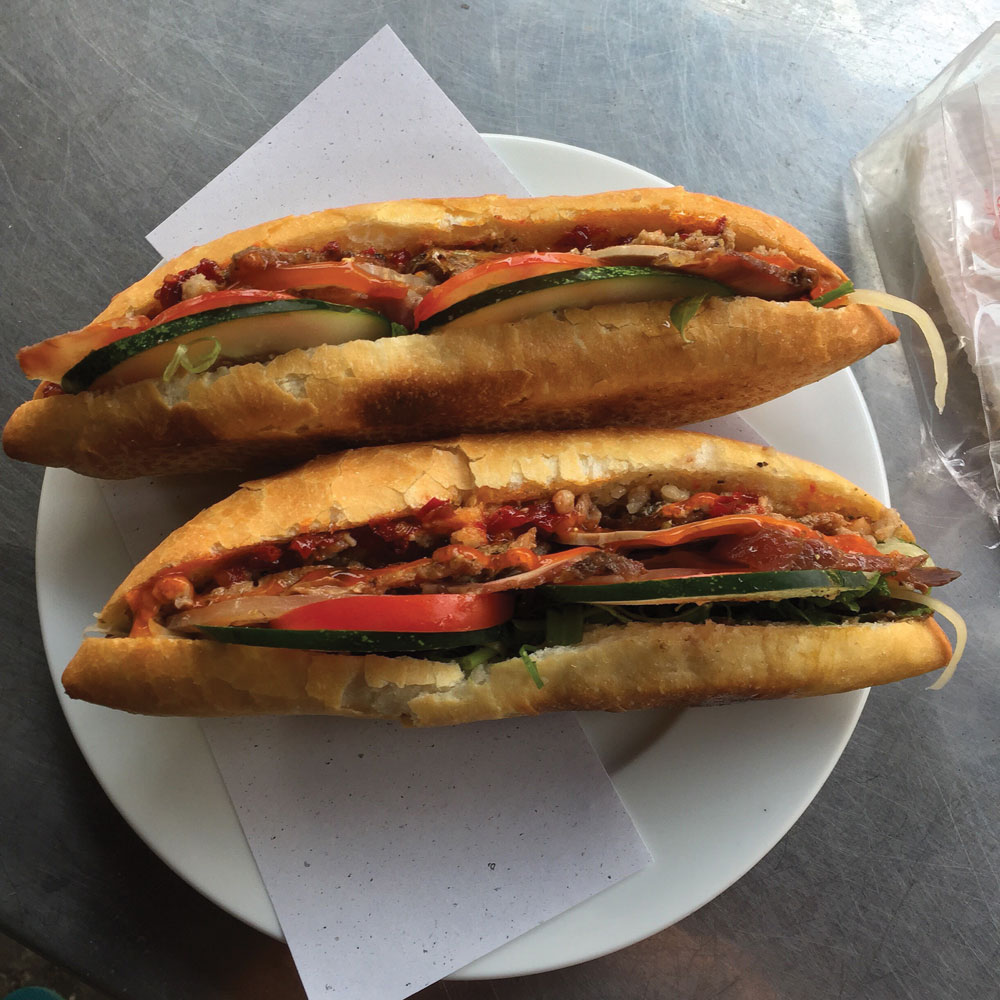
Towards the summit, the wartime relics start to become more visible. Turrets, lookout towers, walls and fences, once part of an elaborate defense system, are all slowly being reclaimed by time and the jungle. Bunkers have turned into tourist shops, all here to see the road Top Gear made famous—no locals take this road unless they have to. The gloomy ride south to the summit quickly turned into a tropical ride down to the ocean, with clouds and fog dispersing before our eyes.
The Untouched City With One Hell Of A Sandwich
There was a rumor amongst soldiers during the Vietnam War that the Vietnamese Army, the Viet Cong, and the Americans unanimously agreed on only one thing: Hoi An was so significant to the culture of Vietnam, it wouldn’t be touched. And it wasn’t.
“But then Vietnam happened, and in the middle of the chaos a tour bus flew around the blind turn in the wrong lane, missing her by feet and slamming on the brakes to let its passengers out to take more selfies with the rogue animals.”
If you took away the tourists and the plethora of scooters (and I guess the tourists on scooters, such as ourselves) Hoi An pretty much remains the 500-year-old fishing village that it was way back then. The market is still there, though it mainly trades in tourist goods these days, and the city itself is untouched. The buildings are old, the bridges made of stone, the food fresh and wonderful. Take away the modern-day conveniences and you can see why tourists are flocking here, it feels so authentic that it could all be fake.
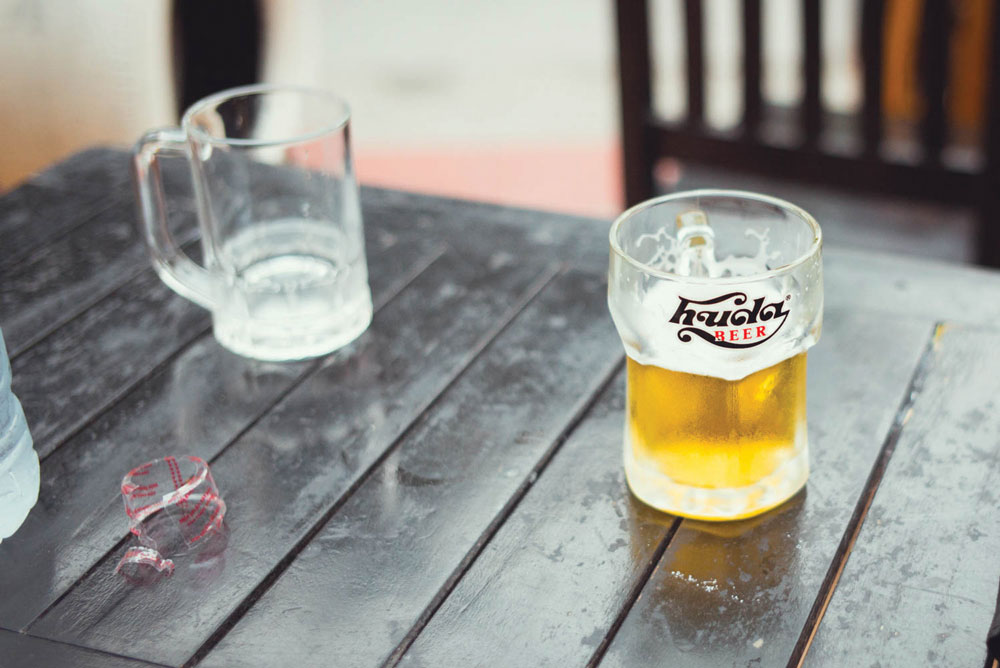
Supposedly this particular Bánh Mì is the best sandwich in the world, according to Anthony Bourdain. For under 2 bucks with a beer, we certainly agree.
It’s like a Vietnamese Disney World for culture, everything curated, down to the women in traditional dress offering a variety of vegetables for you to photograph—for a tip. We only came here for a Bánh Mì—and supposedly this particular Bánh Mì is the best sandwich in the world, according to food traveler Anthony Bourdain. It’s a mixture of pâté, pork char siu, a fried egg, carrots, parsley, and a combination of chili sauce and secret sauce of the proprietor’s secret. It’s all put in a fresh baguette, a hangover of French colonialism, and served for a little under $1 for tourists.
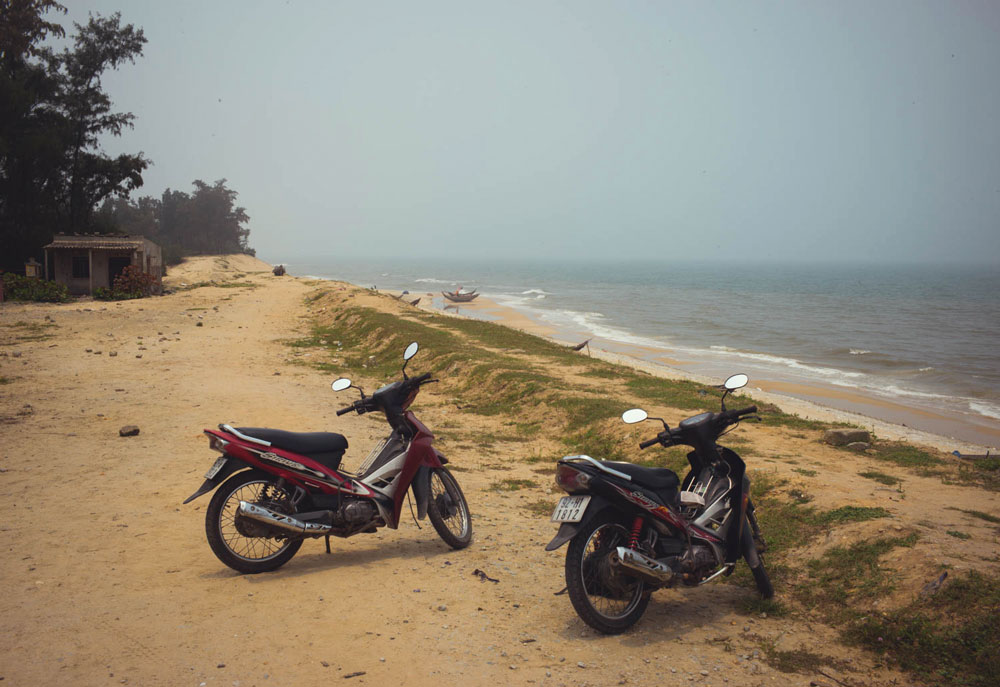
You’ll always be surprised when you turn a corner in Vietnam. You might be staring at a bus that’s about to hit you, or a scenic ocean view.
Combine it with a bia hoi, a style of freshly brewed local beer served in a plastic bag for about twenty cents, and you’ll have the best sandwich of your life for under two dollars.
We gave Nguyen Thi Loc, the owner of the street food stall bearing her name, the equivalent of $5 USD, and told her to keep the change; closing the chapter of what was the most adventurous 48 hours of my life thus far. We laughed over bia hoi about how many times we almost died to get this damn sandwich—but riding a scooter was still a much more thrilling option than taking the bus.
Editor’s Note: A version of this article first appeared in the November/December 2017 print issue of Tread magazine.

